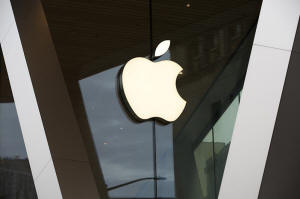Apple unveils a souped-up and more expensive version of its lowest
priced iPhone
 Send a link to a friend
Send a link to a friend
 [February 20, 2025] By
MICHAEL LIEDTKE [February 20, 2025] By
MICHAEL LIEDTKE
Apple has released a sleeker and more expensive version of its lowest
priced iPhone in an attempt to widen the audience for a bundle of
artificial intelligence technology that the company has been hoping will
revive demand for its most profitable product lineup.
The iPhone 16e unveiled Wednesday is the fourth-generation of a model
that’s sold at a dramatically lower price than the iPhone’s standard and
premium models. The previous bargain-bin models were called the iPhone
SE, with the last version coming out in 2022.
Like the higher-priced iPhone 16 lineup unveiled last September, the
iPhone 16e includes the souped-up computer chip needed to process an
array of AI features that automatically summarize text, audio and create
on-the-fly emojis while smartening up the device’s virtual assistant,
Siri. It will also have a more powerful battery and camera.
All those upgrades will translate into a higher starting price for an
iPhone 16e at $600, a 40% increase from $430 for the last iPhone SE. But
iPhone 16e will be more affordable than the cheapest standard iPhone 16
at $800. The new phone will be available in stores Feb. 28, but can be
pre-ordered beginning Friday.

“We’re so excited for iPhone 16e to complete the lineup as a powerful,
more affordable option to bring the iPhone experience to even more
people,” said Kaiann Drance, an Apple vice president in charge of
promoting a device lineup that accounts for more than half of the
company's revenue.
But Apple is also trying to balance its desire to offer a more
affordable iPhone that will lure more people into its sphere of product
against its self interest in maximizing its profits from selling higher
price products, according to Forrester Research analyst Dipanjan
Chatterjee.
[to top of second column] |

An Apple logo adorns the facade of the downtown Brooklyn Apple store
on March 14, 2020, in New York. (AP Photo/Kathy Willens, File)
 “The problem with a lower-end
product in a luxury portfolio is that you want it to be good but not
so good as to cannibalize the crown jewels," Chatterjee said.
Although Apple has been hyping its foray into AI since last June,
the complete set of features still haven’t been released in the U.S.
and the technology still isn’t even available in some parts of the
world.
The delays in making the iPhone’s AI — dubbed “Apple Intelligence’"
— more widely available through free software updates dinged the
Cupertino, California, company during the past holiday when sales of
the device dipped slightly from their 2023 levels.
Apple has primarily been losing the ground in China, where it hasn’t
yet specified when the iPhone's AI technology will be available. But
the company recently struck an AI partnership with Alibaba in China
that could pave the way for the technology coming to iPhones in that
country this spring.
Besides being able to handle AI for the first time, the iPhone 16e
has a different look from previous SE models. It boasts a 6.1-inch
display screen, slightly larger than the 4.7-inch display on SE
model and no longer has a home screen button like the SE had. The
new iPhone 16e will rely include a facial recognition option for
unlocking the device, just like the higher priced models do.
Apple's shares edged higher Wednesday to close at $244.87, below the
stock's peak of roughly $260 reached in late December.
All contents © copyright 2025 Associated Press. All rights reserved |